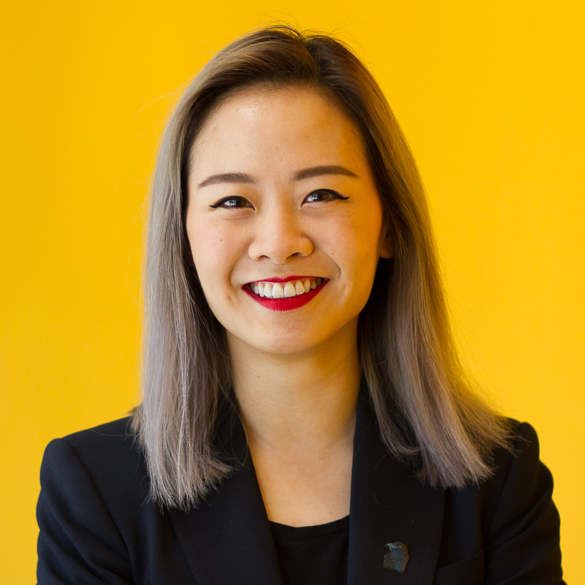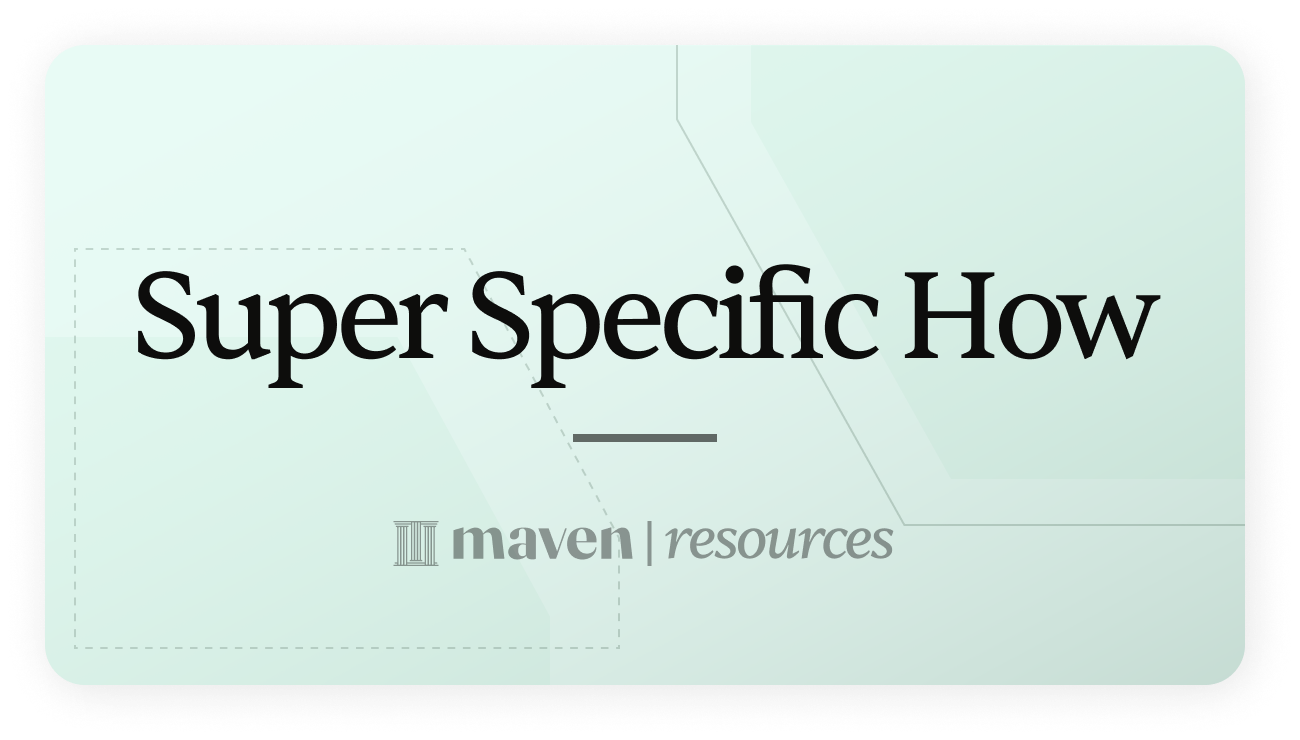Have you ever taken a course and thought, “Well, that wasn’t worth my time. I already knew most of what the instructor was teaching.”
This is pretty common. But why does it happen?
My hypothesis is because most instructors spend 80% on the what/why, and only 20% on the how.
Great instructors do the opposite: They spend 80% of time on the how. This is why their courses feel meaty and substantial.
The antidote to vague, hand-waving BS is what I call the
Super Specific How. This is a concept I teach in the Maven Course Accelerator.
Enroll here (it’s free).
Here are examples of vague BS vs Super Specific How
💩 BS: Stating the importance of using warm yet authoritative language. (Most of us are already convinced of this point. The problem is how to actually do it.)
✅ Super Specific How: Showing examples of Slack messages you’ve sent to a direct report. When you’re super specific, you show how you gave constructive feedback about a direct report’s sloppy work--and how the person was glad for your feedback. You share the actual script you used and words you said.
---
💩 BS: Explaining the importance of setting boundaries (If your audience is taking a course from you on this topic, chances are they’re already bought-in on why to set boundaries. The hard part is how to set boundaries if your family, friends, and coworkers are quite happy with you not having any.)
✅ Super Specific How: Sharing the actual word-for-word script you used to set boundaries with your coworker. Including the situation, your specific relationship dynamics, words you used, and what happened as a result. Going a step further: You can give students a chance to role-play how to bring up a topic they’ve been wanting to mention to their boss, but were anxious about how to handle the conversation.
---
💩 BS: Describing how to write a compelling cold DM.
✅ Super Specific How: Sharing the copy you used and analyzing why you said what you said, what you could have said instead, and offering the thought process behind other creative decisions you made.
---
💩 BS: Giving 3 bullet points on why it’s important to operationalize and optimize repetitive processes
✅ Super Specific How: Showing screenshots of a system for how you’ve optimized Calendly by creating color-coded events that allow you to easily triage calls based on importance and amount of time needed.
Screenshots, scripts, and examples
Examples are your secret weapon; examples give 10x more tactical information than what you can describe with words alone. Examples show students what “great” looks like.
What can you show screenshots of?
Emails
Calendar
iMessage/text messages
Paid ads
Tweets
Google Docs
Spreadsheets
Notion
Airtable
GitHub
Top down approach for what to share:
Go through your application responses or survey replies of what students said they wanted to learn. This allows you to see throughlines and patterns, so you can create better marketing to appeal to these students and improve your course.
Prospective students are literally telling you what they want to learn from you. This is why in your application or survey announcing your course, it’s worth adding a question like “What do you most want to learn in this course?”
Aside from applications, you can compile all the questions you get from Twitter DMs, emails, podcast interviews, etc. What patterns do you notice? What questions are coming up repeatedly? What’s surprising?
Bottom up approach for what to share:
With a bottom up approach, you gather and assemble examples, then put them in buckets. Doing both top down and bottom up approaches helps you get a more comprehensive set of examples. Ask yourself:
What would your students find juicy?
What would they kill to see?
What are the best docs you’ve ever created?
What was the best email you’ve ever written?
What was a transformative moment and personal story you can share that will get students to see in a completely new way?
This should get you started…
But here’s the thing: The fastest way to understand what a great course looks like is to take a great course yourself.
Luckily, you can do this for free. The Maven Course Accelerator is our free 3-week program on how to build a successful course. Hundreds of instructors have made millions building their course businesses, and many of them took the accelerator.
When you start earning on Maven, you keep 90% of your course revenue minus Stripe fees. On average, instructors earn $20,000 in their first cohort. Plus, you own your IP and content. Our goal is to help you launch and grow a course you’re proud of.






